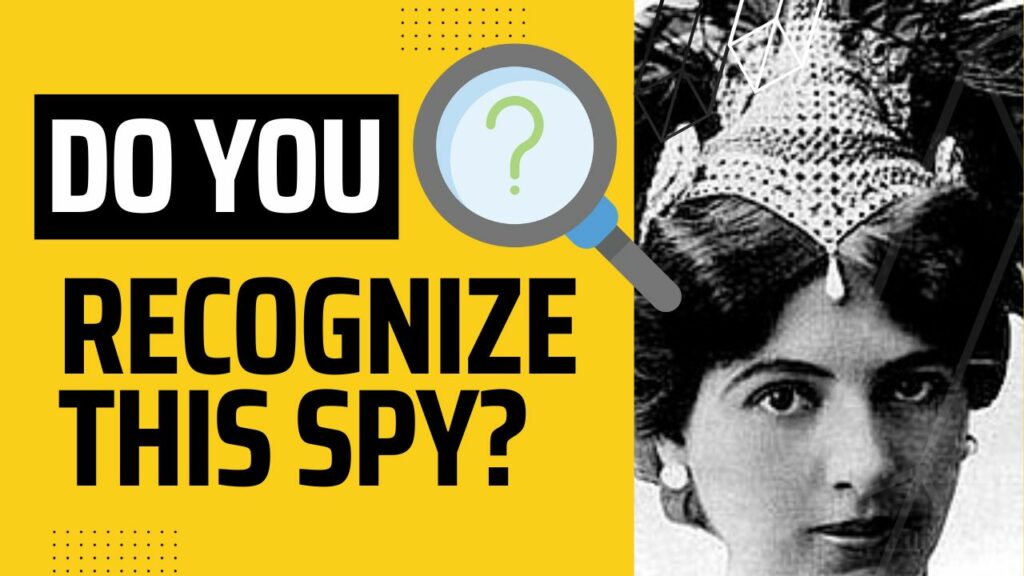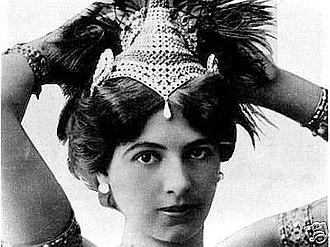
Mata Hari: The Exotic Dancer Turned Spy
She was the talk of the town, the belle of the ball, and the object of desire for many. Mata Hari was the epitome of glamour, with her sultry looks and exotic charm captivating the hearts of men across Europe. But there was more to this woman than just her beauty – she was a spy, a femme fatale whose secrets and betrayal would make headlines for years to come.
Mata Hari tops out list of the top 10 famous spies.

Born Margaretha Geertruida Zelle in the Netherlands in 1876, Mata Hari had a tumultuous childhood. Her parents divorced when she was young, and her father’s subsequent remarriage to a woman she despised only added to her misery. She found solace in dance, and at 18, she moved to Paris to pursue a career as a performer.
It wasn’t long before Mata Hari became one of the most sought-after dancers in the city. Her risqué performances, which often involved stripping down to a few veils, drew crowds of admirers. She also became known for her liaisons with wealthy men, including high-ranking military officials.
It was this reputation that caught the attention of French intelligence during World War I. Mata Hari was recruited as a spy for the French, but her inexperience and lack of training made her an easy target for the Germans. She was quickly captured and charged with espionage.
The details of Mata Hari’s betrayal are still shrouded in mystery. Some believe that she was a double agent, working for both the French and Germans. Others speculate that she was set up by the French, who wanted to distract from their own intelligence failures. Regardless, Mata Hari was found guilty and sentenced to death by firing squad.
In her final moments, Mata Hari refused a blindfold and blew kisses to her executioners. Her death only added to her legend, cementing her status as a tragic heroine. But behind the glamour and intrigue, there was a woman who had been used by those in power, a victim of a war that had no heroes.
Mata Hari’s legacy continues to fascinate us to this day. She remains a symbol of feminine power and sexuality, a reminder of the dangers of trusting too much and the consequences of betrayal. Her story is a cautionary tale, but also a celebration of a woman who defied convention and lived life on her own terms.
Mata Hari’s Early Life
Mata Hari was born on August 7, 1876, in Leeuwarden, Netherlands, and her real name was Margaretha Geertruida Zelle. She was the daughter of Adam Zelle, a successful hatter, and Antje van der Meulen. Her parents divorced when she was young, and she was raised by her mother. Margaretha was sent to live with relatives after her mother died when she was just 15.
Margaretha was a talented student and excelled in school, but her family’s financial situation meant that she was forced to leave school and work as a kindergarten teacher. When she was 18, she met Rudolf MacLeod, a Dutch officer in the Dutch East Indies Army, and they married in 1895. They moved to Java, where they had two children.
Margaretha was unhappy in her marriage and felt isolated in Java, so when Rudolf was posted to the Netherlands, she stayed behind with the children. She began performing in local dance shows, and her performances were a hit with both the Dutch and the Javanese.
In 1903, Margaretha moved to Paris and began performing as a dancer under the stage name Mata Hari, which means “eye of the day” in Malay. She quickly became known for her exotic and provocative dances, and she was soon performing in some of the most prestigious venues in Paris.
Mata Hari’s success as a dancer allowed her to live a lavish lifestyle, but she also had many lovers, both male and female. She was known for her beauty and her seductive charm, and she often used her sexuality to get what she wanted.
As World War I broke out in 1914, Mata Hari’s career began to decline. She continued to perform, but her shows were no longer as popular as they once were. She also became involved in espionage, working as a spy for both the French and German armies. However, her amateurish attempts at espionage were uncovered, and she was arrested in 1917.
Mata Hari: Spy or Double Agent?

Mata Hari’s fame as a dancer and courtesan attracted the attention of many men, including military officers. During World War I, she was recruited as a spy by both the French and the Germans.
Mata Hari’s involvement in espionage began when she was living in Paris and became acquainted with a German military attaché. In return for money, she agreed to spy for the Germans, providing them with information about French military movements and other intelligence.
However, Mata Hari’s loyalty was always in question. French intelligence also recruited her to act as a double agent. Her task was to obtain information from the Germans and pass it on to the French. But it’s unclear whether she ever provided any useful intelligence to the French, or if she was simply playing both sides to make money.
In 1917, Mata Hari was arrested by French authorities and accused of espionage. Despite her protests of innocence, she was found guilty and sentenced to death. The evidence against her was largely circumstantial, and some historians believe she was actually a scapegoat for the failure of the French intelligence service.
Mata Hari was executed by firing squad on October 15, 1917, at the age of 41. Her death sparked controversy and speculation about her guilt or innocence, and she remains a fascinating and controversial figure in the history of espionage.
Her Personal Life and Legacy
Mata Hari was known as a seductress and a spy, but there was more to her personal life than just espionage. She had several tumultuous relationships throughout her life, which helped shape her character and ultimately contributed to her downfall.
In her youth, Mata Hari dreamed of becoming a dancer. She left her home in the Netherlands to pursue this dream and eventually found her way to Paris. She performed in cabarets and other venues, and her exotic looks and sensual movements captivated audiences. Her performances were controversial for their sexually suggestive nature, but this only added to her allure.
Despite her success as a dancer, Mata Hari struggled with personal relationships. She had multiple marriages and affairs, but none of them seemed to satisfy her. Her lovers included wealthy businessmen, military officers, and even members of royalty. However, she never found the love and stability that she longed for.
In 1915, as World War I raged on, Mata Hari was approached by German intelligence officers. They offered her a deal: in exchange for money, she would become a spy for the Germans and pass along information she learned from her high-profile contacts. She agreed, and over the next few years, she became increasingly embroiled in the world of espionage.
Mata Hari’s downfall came in 1917 when French intelligence intercepted a message sent by her German handlers. The message implicated her in a plot to spy for the Germans and revealed her true identity as a spy. She was arrested, tried, and ultimately convicted of espionage. Despite her claims of innocence, she was executed by firing squad in 1917.
Mata Hari’s legacy is a complicated one. She was undoubtedly a talented performer, but her decision to become a spy ultimately led to her demise. Her life has been romanticized and mythologized over the years, with some portraying her as a hero and others as a villain. In reality, she was a complex and flawed individual, driven by a desire for money and adventure, but ultimately undone by her own ambition.
Conclusion
Mata Hari’s life was one filled with adventure, love, and tragedy. From her humble beginnings in the Netherlands to her rise as a famous exotic dancer, she captured the hearts of many. Her legacy, however, was forever tarnished by the allegations of espionage and betrayal.
Despite her claims of innocence, Mata Hari was found guilty of spying for the Germans during World War I. The evidence against her was circumstantial at best, but the jury was convinced of her guilt. Mata Hari was executed by firing squad in October of 1917, at the age of 41.
Her death left many questions unanswered. Was she really a spy, or was she simply a victim of circumstance? Was she guilty of the crimes for which she was accused, or was she merely a convenient scapegoat for the military authorities? These questions continue to intrigue historians and laypeople alike, and the truth about Mata Hari’s life and death may never be fully known.
Despite her controversial legacy, Mata Hari remains an enduring symbol of feminine power and sensuality. Her exotic beauty and seductive dance moves inspired many artists and writers, and her story has been the subject of countless books, films, and plays. Her name has become synonymous with mystery, intrigue, and forbidden desire.
In the end, Mata Hari’s life was a testament to the power of the human spirit in the face of adversity. She lived life on her own terms, defying social conventions and cultural norms to pursue her dreams. Her tragic end may have cut short her journey, but her legacy lives on as a reminder of the enduring allure of the human spirit.
Read the entire list of the top 10 famous spies or find another top 10 famous folks countdown to explore.
